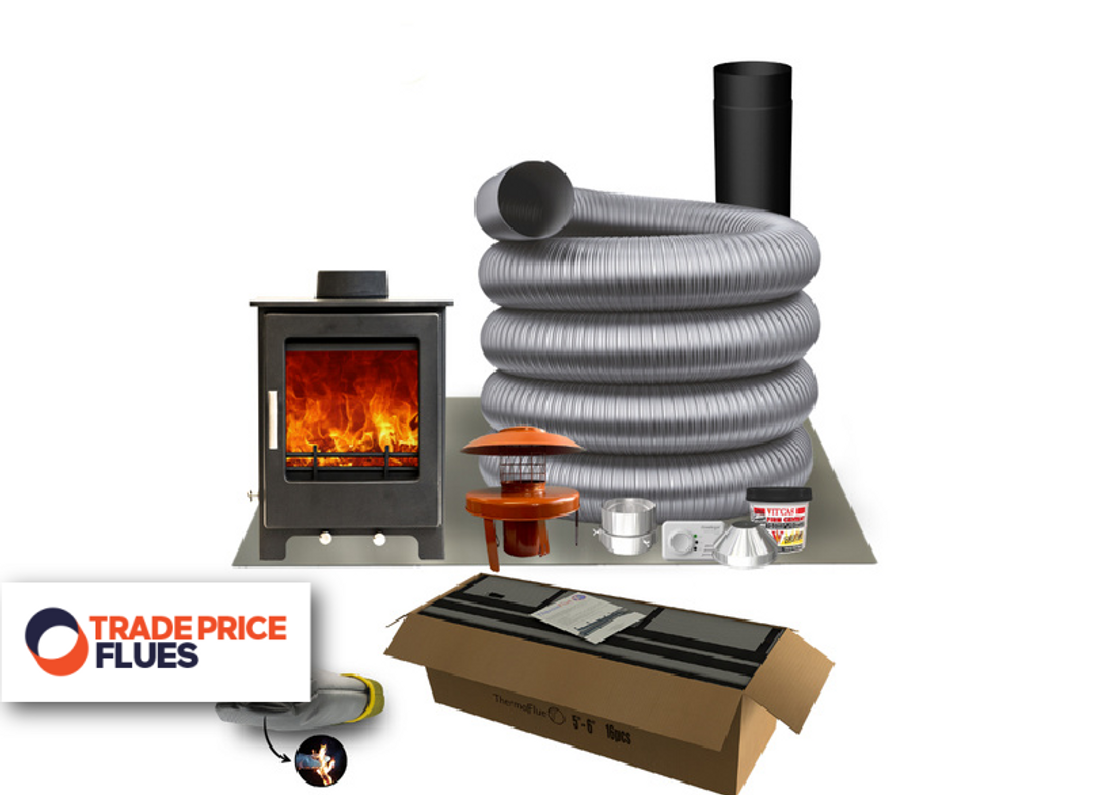A Complete Guide to Log Burner Flues
With energy prices rising, more and more people are choosing to heat their home with a log burner. Not only are these handy appliances beautiful to look at, but they run on seasoned wood - giving you a degree of independence from the energy networks. But, if you’re going to buy one, it’s vital that you use the correct flue setup. If you’re not sure what that entails, then keep reading Trade Price Flues’ complete guide to log burner flues…
What is a log burner flue?
Okay, so let’s address the elephant in the room. What exactly is a log burner flue?!
Well, let’s start by defining what a log burner flue is not.
Many people confuse the stove pipe with the flue. But, they’re not the same thing.
The stove pipe is simply the vertical metal pipe which rises from the log burner and helps to funnel smoke and combustibles out, away from the fire.
The flue on the other hand is the internal cavity of the chimney - the space where smoke from the log burner can rise up and out of your home.
The illustration below shows what we mean.
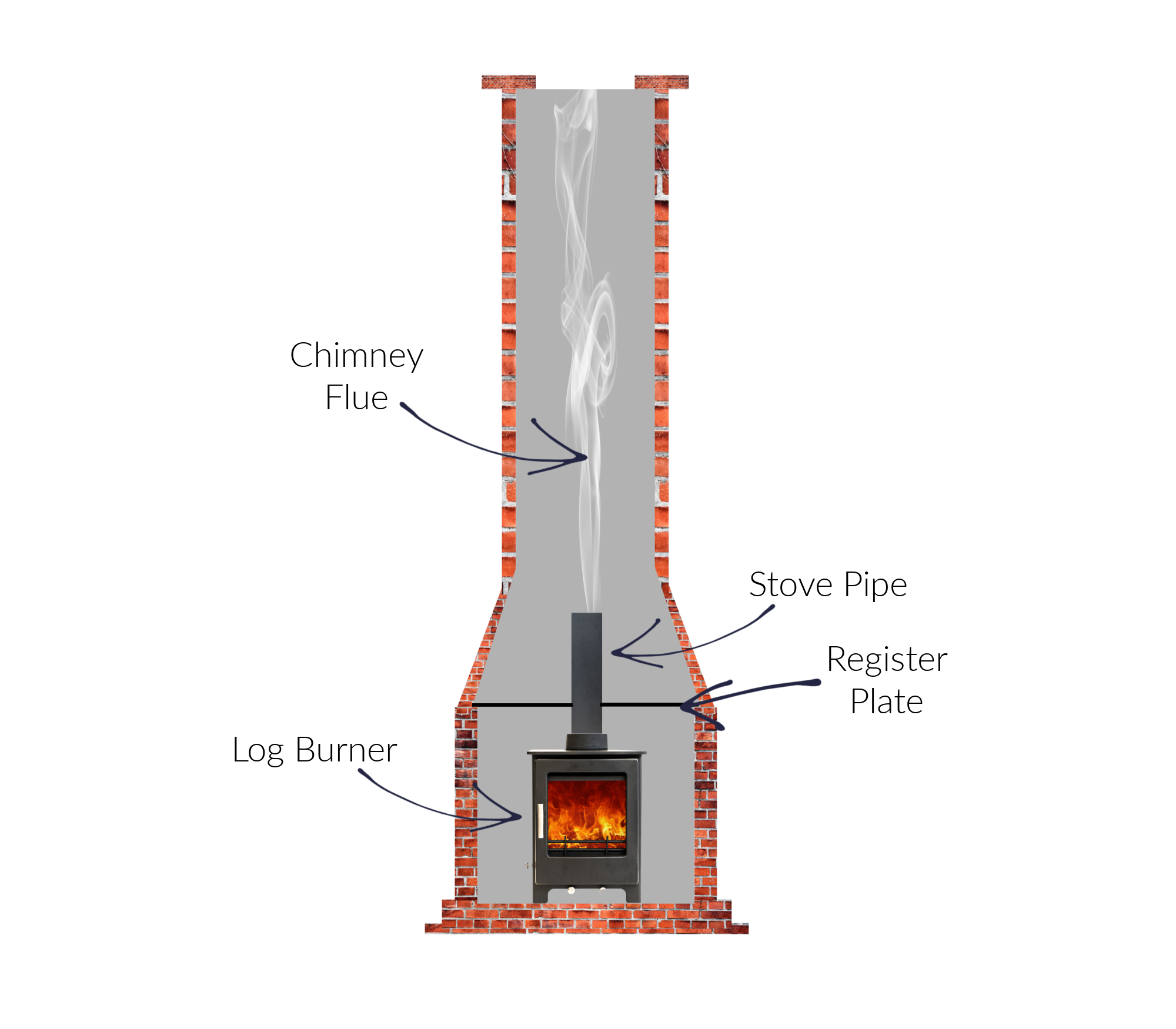
As you can see, both the stove pipe and chimney flue have an important part to play in funnelling smoke and other combustible materials away from your home.
In the scenario illustrated above, the log burner has been installed in an open fireplace and vents its smoke directly into the chimney’s flue.
However, there’s a better, more efficient way to install and use a log burner - the use of a log burner flue liner…
Guide - if you want to find out more about the differences between a chimney and a flue, read our guide here.
What is a log burner flue liner?
A log burner flue liner is, as the name suggests, a liner which ‘lines’ the chimney flue cavity.
A chimney flue liner will typically connect directly to the log burner’s stove pipe using a fixing collar or other form of fixing.
The liner will then run the entire length of the chimney flue, finishing at top and secured in place using the chimney pot or other form of fixing (the type of fixing will depend on the particular flue liner).
The illustration below shows a log burner which is using a chimney flue liner:
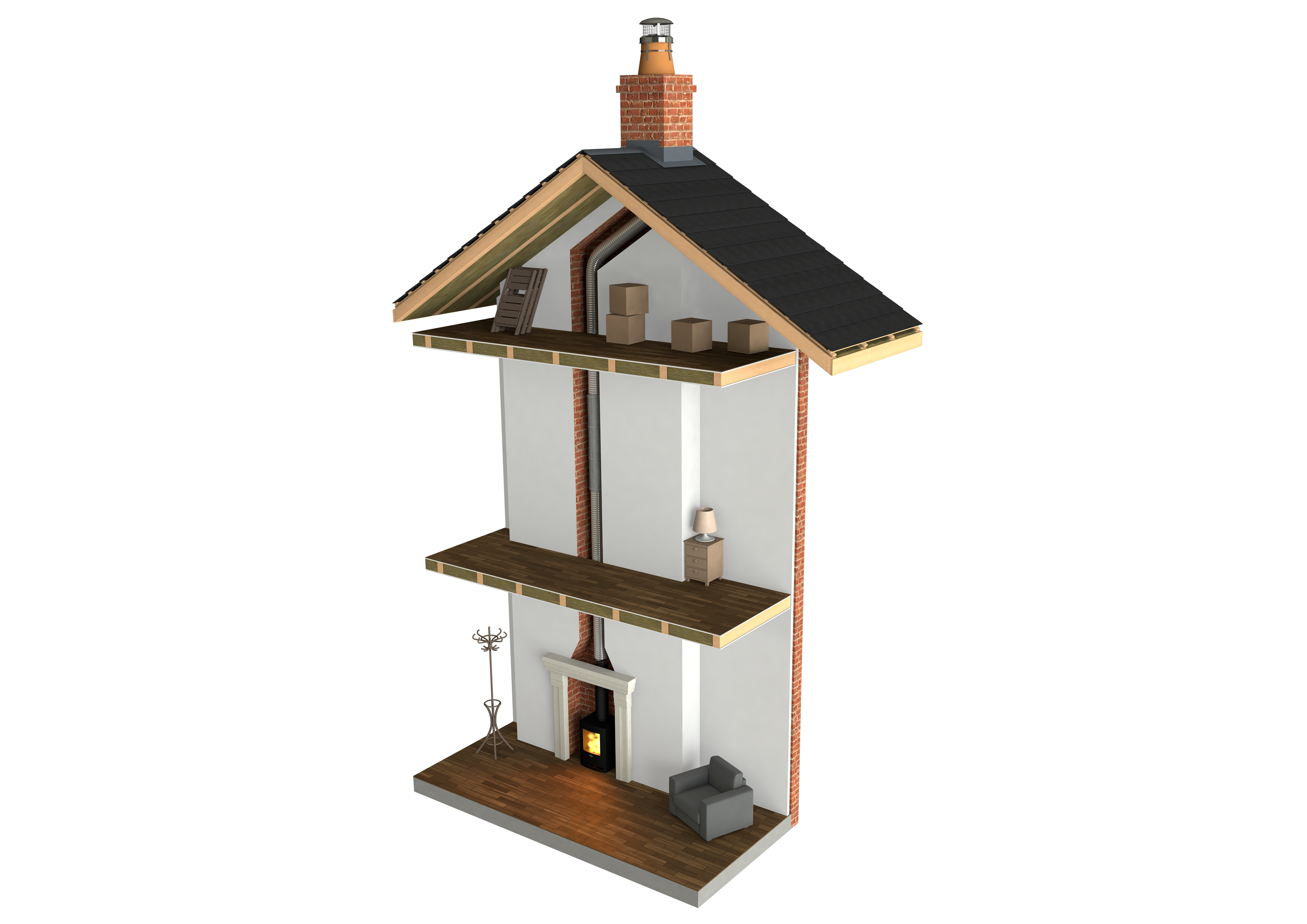
In short, a log burner flue liner adds an additional layer of insulation to your chimney flue.
As we’ll see next, this provides a range of benefits to you and your log burner.
What are the benefits of using a log burner flue liner?
Is it really worth spending extra money on a flue liner when you can just vent your log burner directly into your chimney?
The answer is a solid yes.
To explain why a flue liner adds so many benefits, let’s first look at the drawbacks of just letting your log burner vent directly into the chimney flue:
> Traditional chimneys and their flues tend to be poorly insulated. Chimneys prior to 1960 would typically be lined with lime mortar. Chimneys built after 1960 would be lined with concrete, pumice or clay. None of these materials offer a great deal of insulation.
> Because these types of chimneys are poorly insulated, this means that smoke from your log burner will rapidly cool as it rises. In the worst cases, this can result in the smoke falling back down the chimney and into your living room!
> Having a poorly insulated chimney and flue can also result in other issues such as creating a poor or non-existent ‘draw’ for your log burner, making it harder for you to light your log burner, increasing the likelihood of experiencing downdraft and making your log burner less efficient.
Just to be clear, let’s set out the benefits of using a flue liner with your log burner:
> A flue liner will insulate your chimney flue - making it work far better.
> A flue liner will improve the ‘draw’ of your chimney - the flow of air from your living room up out into the open air.
> A flue liner will make your log burner easier to light - because the flue will be warmer, you won’t be fighting against the cold when lighting your log burner.
> A flue liner will make your log burner more efficient - because the flue will have a proper ‘draw’ your log burner will be burning logs at the most efficient rate.
So it’s clear; using a flue liner with your log burner is the sensible choice. You’ll have a much more pleasant log burner ownership experience if you decide to install a chimney flue liner.
Of course, the next question is… ‘what type of flue liner do I need?’
We’ll answer that next.
What type of flue liner do I need for my log burner?
When it comes to selecting a flue liner for your log burner there are a number of factors you need to take into account; flue liner material, flue liner diameter, closure plate and flue parts, adapters and more.
We’ll take a look at each of these factors below.
Flue liner material
Different fuels burn at different temperatures. That’s the key point to bear in mind when selecting a flue liner for your log burner.
If you intend to stick to burning wood, seasoned wood and logs, then you’ll want to buy a 316 grade liner. This represents the grade of steel that the flue liner is manufactured from.
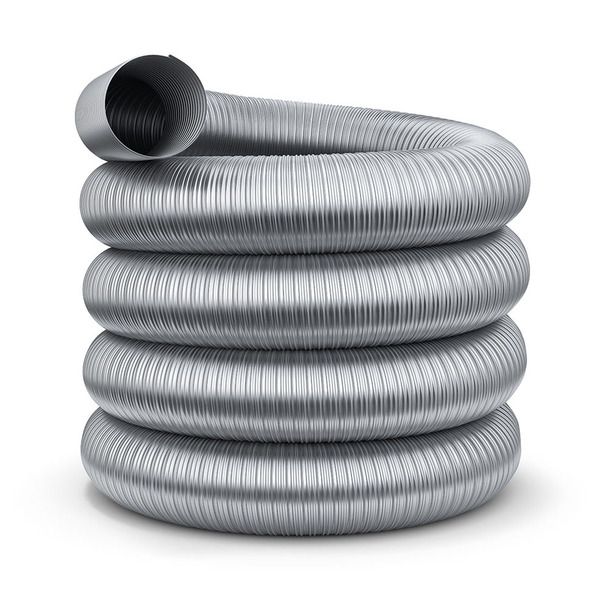
Shop Now - 6” 904/904 Super Flex Chimney Flue Liner
On the other hand, if you think you’ll be burning fuels such as coal (which burn at a higher temperature than wood), then you should buy a 904 grade liner. Again, this represents the grade of steel that the flue liner is manufactured from.
Whilst a 904 grade flue liner will be more expensive, it will also be more durable.
Flue liner diameter
Another important point to consider when selecting a flue liner for your log burner, is its diameter. Flue liners are available in a range of diameters including 4”, 5”, 6”, 7”, and 8”.
The flue liner needs to fit almost seamlessly to the stove pipe - if it doesn’t then it’ll leak smoke as well as impairing the function of the fire.
As such, you should check the diameter of your stove pipe and select the related diameter flue liner. If your log burner hasn’t come with a stove pipe, then you’ll need to buy one - check the diameter of the stove pipe ‘collar’ (a circular exit usually located on the top or rear of the log burner).
In other words, the stove pipe needs to be of the correct diameter for your log burner and your flue liner needs to be of the correct diameter for your stove pipe!
If you are unsure what diameter flue liner you require, either check the log burner manufacturer’s instructions, or feel free to contact us for advice on sales@tradepriceflues.co.uk or call 0161 7300 969.
Flue liner length
In addition to ensuring you buy the correct diameter flue liner, you should ensure you buy the correct length flue liner too.
Your flue liner will need to span the entire distance between your log burner and the top of your chimney. If you’re not sure how far this is, a chimney sweep should be able to measure the height of your chimney flue for you.
Tip - it’s generally wise to buy a flue liner that’s slightly longer than you need. It can always be cut down to fit. On the other hand, you cannot join two chimney liners together as this is against the Building Regulations.
Closure plate
You may have spotted this in the illustrations above. A closure plate is designed to be used with log burners that are connected to chimney flue liner.
A closure plate closes off the base of a chimney - creating a kind of ‘ceiling’ above the log burner.
A closure plate not only improves the aesthetics of your fireplace, but will also prevent detritus that makes its way into the chimney (twigs, leaves etc) from falling down into your living room. A closure plate also helps to prevent heat from your log burner escaping up the chimney.
You may also have heard of something called a register plate. Note that this is different from a closure plate and is only to be used when you aren’t using a flue liner with your log burner.
Pot hanger connector
In addition to connecting your flue liner to your log burner’s stove pipe, you’ll also need to attach your flue liner to the top of your chimney.
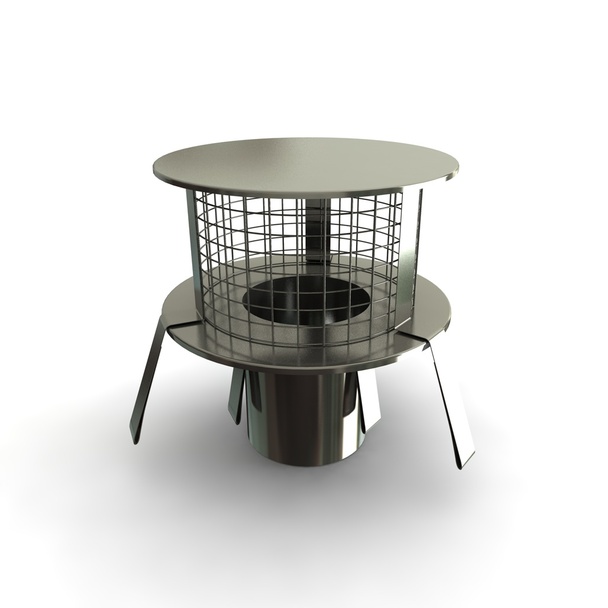
Shop Now - 4” Pot Hanger Rain Hat
One of the most popular and effective ways of attaching a flue liner to the top of a chimney is through the use of a pot hanger connector.
These are effectively cowls that sit atop the chimney, with the flue liner connected to it via a series of screws or clips. The liner is then ‘suspended’ within the chimney flue cavity.
Flue liner adaptor
One of the final things you’ll need to go with your flue liner, is an adapter. This is a piece of equipment that will connect your stove pipe and flue liner together.
These adaptors typically use grub or butterfly screws to fix the stove pipe and flue liner together.
Tip - don’t forget to check the diameter of your flue liner adaptor. It needs to connect the stove pipe and flue liner after all!
Heat cement
This isn’t always essential, but it can be handy to have a tube of heat cement ready when you are installing a log burner flue liner.
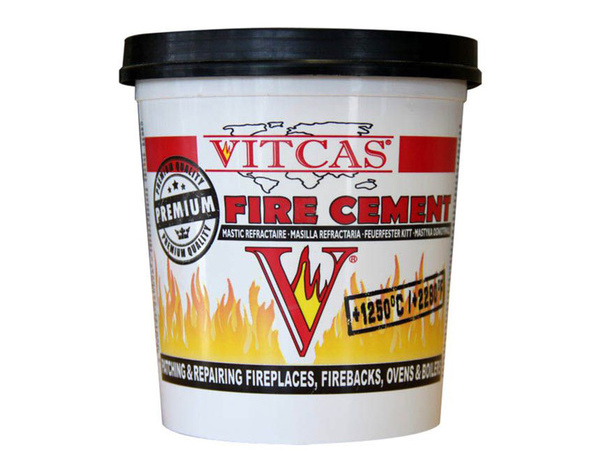
Shop Now - Vitcas Fire Cement
Heat cement can be used to seal any joints around your stove, and particularly for sealing any gaps between the stove pipe and stove collar. Remember, you don’t want smoke or particulates leaking out into your living room.
So, with all of those points in mind, you’ll be ready to buy the correct flue liner for your log burner!
The best flue liner kits for log burners
Here at Trade Price Flues we know it can be somewhat confusing and challenging buying all of the correct parts and pieces for a flue liner; so, we’ve made it a whole lot easier by creating flue liner kits that contain everything you need to get your log burner up and running this winter.
Below you’ll find a selection of some of our most popular wood burner flue liner kits.
6” 316 Super Flex Chimney Flue Liner Full Fitting Kit
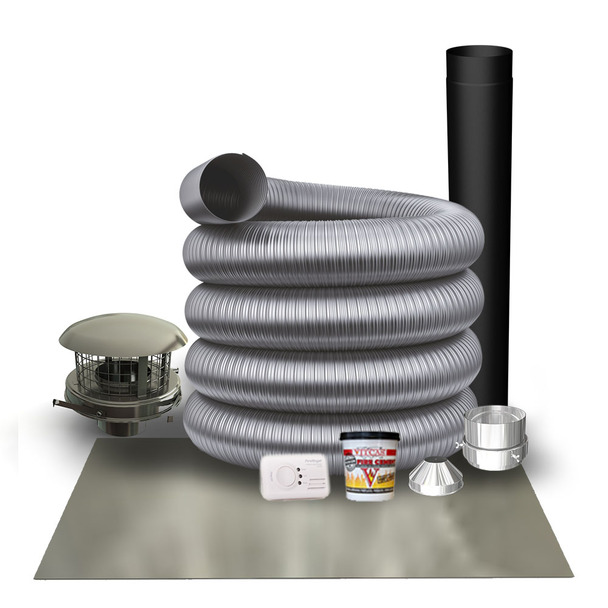
Shop Now - 6” 316 Super Flex Chimney Flue Liner Full Fitting Kit
This flue liner fitting kit is ideal for use with log burners and contains everything you need to install the flue and connect it to your appliance.
The kit comes with a 316 grade flue liner, a closure plate, stove pipe to Super Flex adapter, a vitreous enamel stove pipe, a pot hanger rain cap (to connect your stove pipe to your Super Flex chimney liner), a nose cone, heat cement and even a carbon monoxide alarm to keep you safe whilst your log burner is in operation.
6” 904/904 Super Flex Chimney Flue Liner Full Fitting Kit
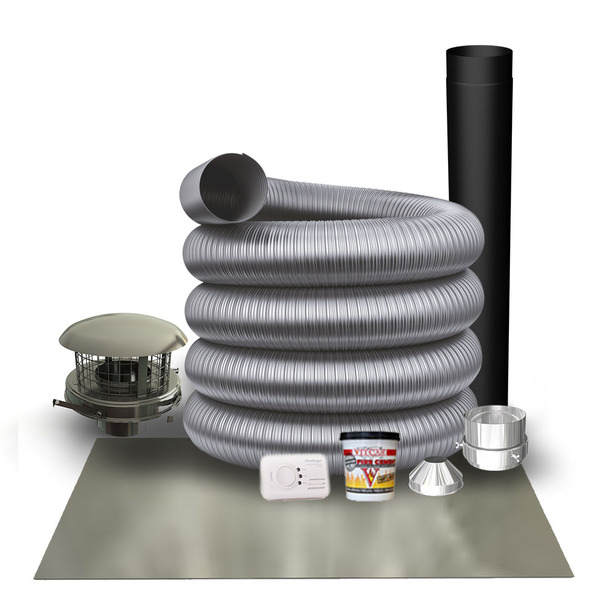
Shop Now - 6” 904/904 Super Flex Chimney Flue Liner Full Fitting Kit
If you think you’ll be burning coal or other hot burning fuels on your log burner, then you should invest in a 904 grade flue liner.
Our 904 grade liner is made from premium 904/904 grade stainless steel, is certified to EN 1856-2 T600 N1 D V2 L70010 G, is fire rated to T1000, has a double-skin construction, is manufactured in the UK and is trusted by installers across the UK.
This kit includes a 904 grade flue liner in addition to all of the other parts required to install the flue liner in your chimney and to connect it to your log burner.
These are just a small selection of our log burner flue liner fitting kits. You can view our complete range of fitting kits, across a range of diameters, here.
The best eco-friendly log burners for your home
If you’ve not yet purchased a log burner for your home, then explore our range of eco-friendly log burners. Here at Trade Price Flues we stock a range of EcoDesign ready stoves.
EcoDesign is a European-wide initiative that has been introduced as a means of reducing emissions from stoves. This means that if you want to buy an environmentally-friendly log burner, then make sure you buy an EcoDesign-ready log burner.
We’ve included some of our most popular EcoDesign ready log burners below.
And, to make your life even easier, we have created log burner and flue packages - which include everything you need to install a log burner. We’ve done the hard work for you, so you don’t have to worry about compatibility, parts and other considerations.
Woodford Lowry 5 Wood Burning/Multifuel Log Burner - Fitters Pack
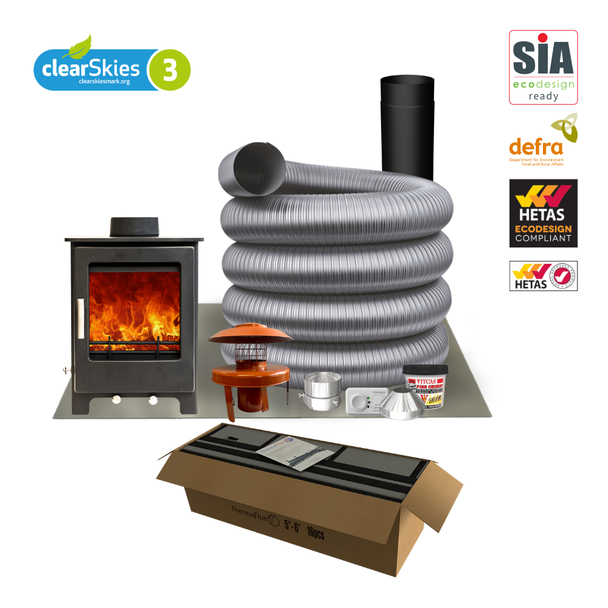
Shop Now - Woodford Lowry 5 Wood Burning/Multifuel Log Burner - Fitters Pack
The Woodford Lowry 5 is an elegant, simple log burner that has a thick gauge steel body and a smooth crafted cast iron door that gives it a modern and smooth appearance.
Thanks to its large viewing window and excellent heat output, this log burner will make any room feel warm and cosy. Plus, thanks to its high efficiency and clean burn technology, the Woodford Lowry 5 will keep your home heated without breaking the bank.
Of course, you don’t just get the log burner. We’ve included everything you need to get the Lowry 5 installed and up and running in no time.
The pack includes:
> Lowry 5 log burner.
> 5” 316/904 or 904/904 Super Flex chimney liner.
> 5” Terracotta Pot Hanger Rain Cap.
> 5” Stove Flue Pipe Adapter.
> 5” Matt Black Stove Pipe.
> 5” Nose Cone.
> 500g Black Vitcas Fire Cement.
> Carbon Monoxide detector.
> Galvanised steel register plate (1000mm x 400mm).
If you’re looking for a new log burner for your home, this kit is everything you need!
Explore our complete range of log burners here.
Trade Price Flues: Home to your log burner essentials
We hope you’ve found our guide to log burner flues helpful. Here at Trade Price Flues we stock a huge range of log burner accessories - including the log burners themselves! So, if you feel the time is right to install a log burner in your home, explore our website now.
Shop chimney flue liner kits at Trade Price Flues now
For more flue, chimney and log burner advice, explore the Trade Price Flues blog…
The Causes of Chimney Downdraft and How to Prevent It | What Size Flue Do I Need for a Wood Stove? | Can You Fit a Wood Burning Stove and Chimney Flue in a Caravan?
Latest Articles
-
Air Pollution Down in the UK Despite Record Wood Burner Sales
Great news! Wood-burning stoves, once considered environmental villains, have transformed into eco-f …18th Apr 2024 -
A Guide to Stove Installation in Lodges, Sheds, and Shepherd’s Huts
Shepherd’s huts, lodges, and sheds have become increasingly popular as charming retreats or alternat …25th Mar 2024 -
Pinned vs. Pinless Moisture Meters: Which is Best for Firewood?
When you collect or buy firewood, it usually starts very moist inside. Using sopping wet wood to bur …4th Mar 2024




